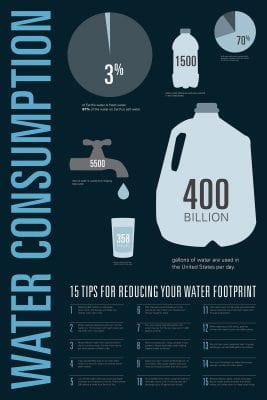The key to making our world’s population more aware of the impact of the individual is to expose it. In general, we need to have higher standards and we need to do a better job to promote global learning from all three aspects: global awareness, global perspective, and global engagement.
In terms of resources, if a person was to cut his or her shower down from twelve minutes to four minutes, he or she would be saving sixteen gallons of water per shower, or 5,840 gallons per year. This could save a person up to $100 a year on water usage. It is these kinds of mathematics that provide people with the incentive to change their unsustainable ways. But the big issue is getting this information out to the public, and actually making people relate the issue back to themselves.
Water consumption is a huge concern for today’s population due to how wasteful we tend to be. More water consumed results in higher energy costs and possible shortages in areas where water is not easily accessible. Certain cultures, simply by geographic location, are naturally bound to have a smaller water supply and a higher demand from the population. A huge part of global learning is having that perspective that just because you have a faucet with running water, doesn’t mean another person across the globe has the same luxury.
Below is one way we can start to spread more information to the public.


